What exactly are User Interface (UI) and User Experience (UX)? What influence do they have on the usability of the device?
Roger Loriol: UI means “user interface” in German. The UI is the interface through which the user interacts with a machine or a website. In relation to our devices, this would previously be the entire control cabinet door with the controller and all switches and lamps. There is now a touchscreen through which all functions of the device can be controlled. UX can be translated as “user experience” in German. UX refers to the totality of impressions a user experiences when interacting with a product. The UI plays a crucial role here. UX design aims to make the user experience as positive, efficient and satisfying as possible.
We have always received positive feedback on the operation of our devices - simple and uncomplicated. We wanted to maintain this with the new IRIS controller of the MATIC Line. That's why when developing the UI, we always paid attention to simple and intuitive operation in order to make the UX positive.
What was the UI development process like?
Roger Loriol: We started by interviewing some long-time customers. During the interviews, exciting opportunities arose to close open gaps with existing features. Customers have responded extremely positively to this experience.
In the second step, we developed the basis for the new UI. This gave rise to many ideas about how the extended features of the MATIC devices and the new controller could be made easy to use.
How was the usability/usability of the UI tested?
Roger Loriol: After completing the design phase, we presented a first version of the UI to various test persons and incorporated their valuable feedback into further development. In collaboration with management, we also carried out this online with our branches. Last but not least, the demo version of the UI was also presented to our customers at various trade fairs.
 Roger Loriol has been responsible for the development of the user interface (UI) for the new MATIC series since 2022 and is also intensively involved with the user experience (UX). In addition to the programming itself, he also takes care of the operating concept.
Roger Loriol has been responsible for the development of the user interface (UI) for the new MATIC series since 2022 and is also intensively involved with the user experience (UX). In addition to the programming itself, he also takes care of the operating concept.
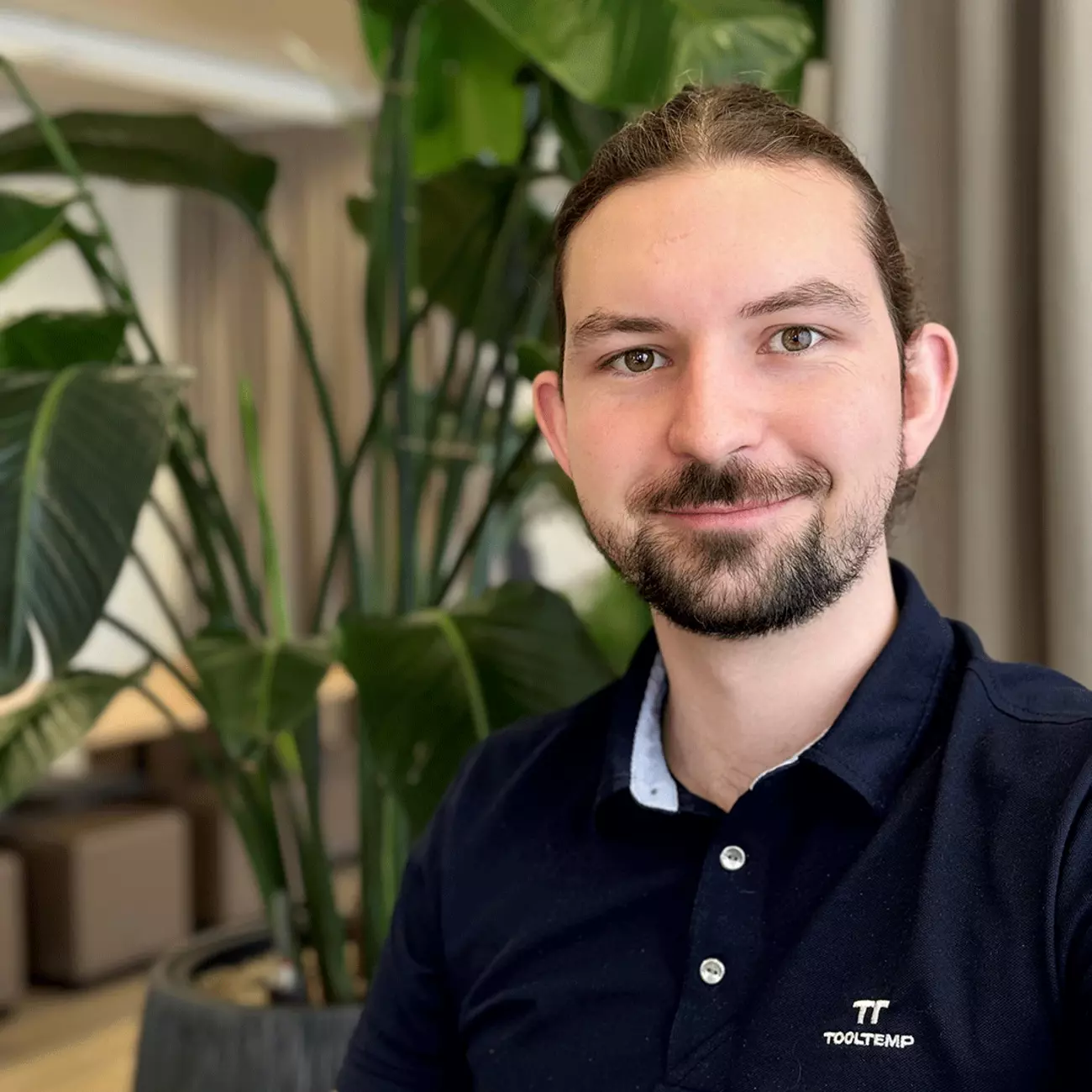 GianAndrea Müller has worked on the control of temperature control units since joining the company. This includes a fundamental physical understanding of how all types of equipment work. This is the basis for the development of the operating logic and control algorithms for the new MATIC line and the actual implementation on the IRIS controller.
GianAndrea Müller has worked on the control of temperature control units since joining the company. This includes a fundamental physical understanding of how all types of equipment work. This is the basis for the development of the operating logic and control algorithms for the new MATIC line and the actual implementation on the IRIS controller.
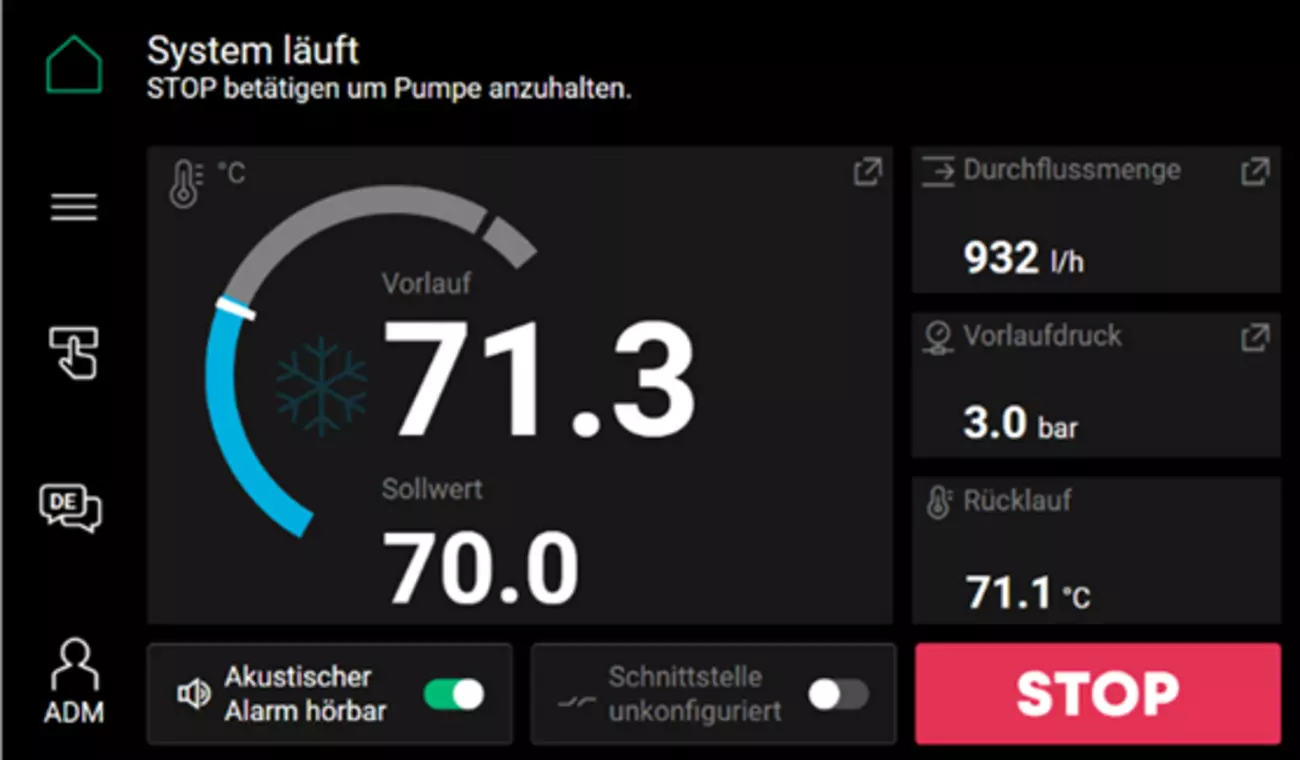 Two examples of the new controller’s user interface
Two examples of the new controller’s user interface
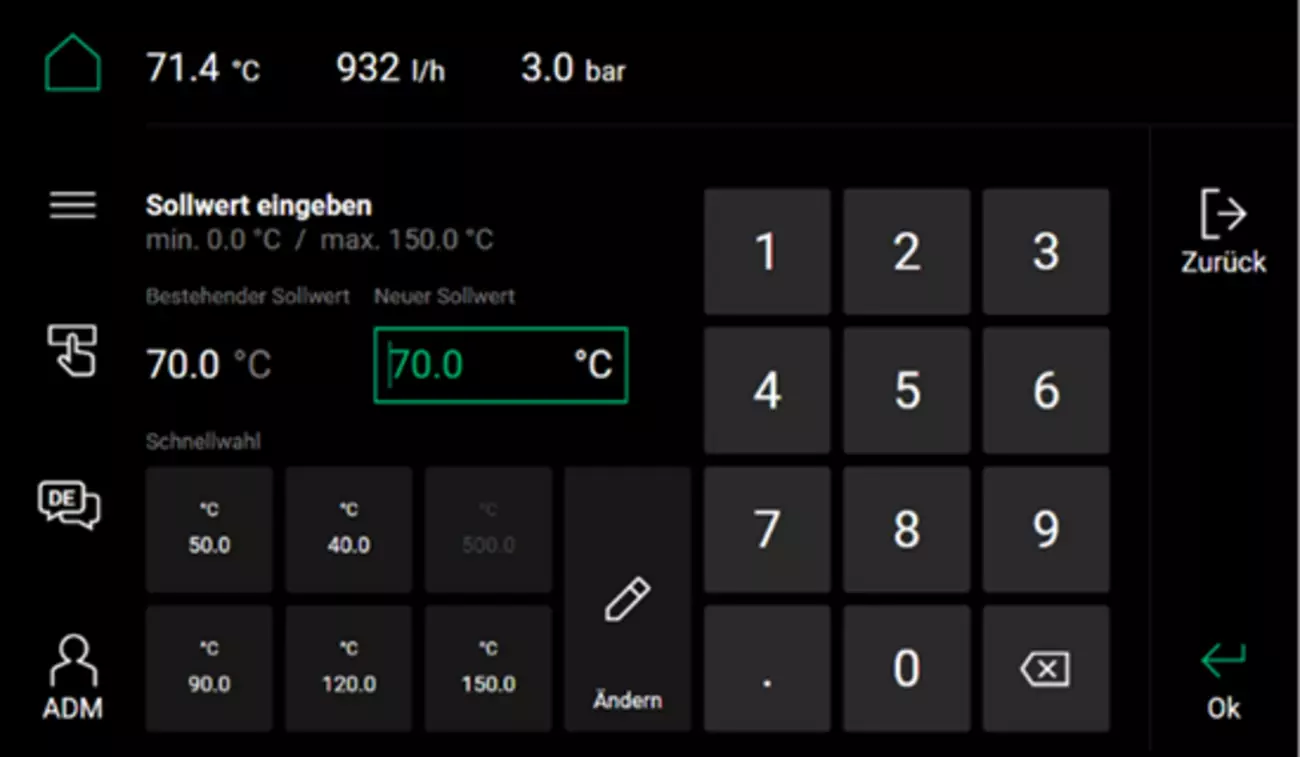
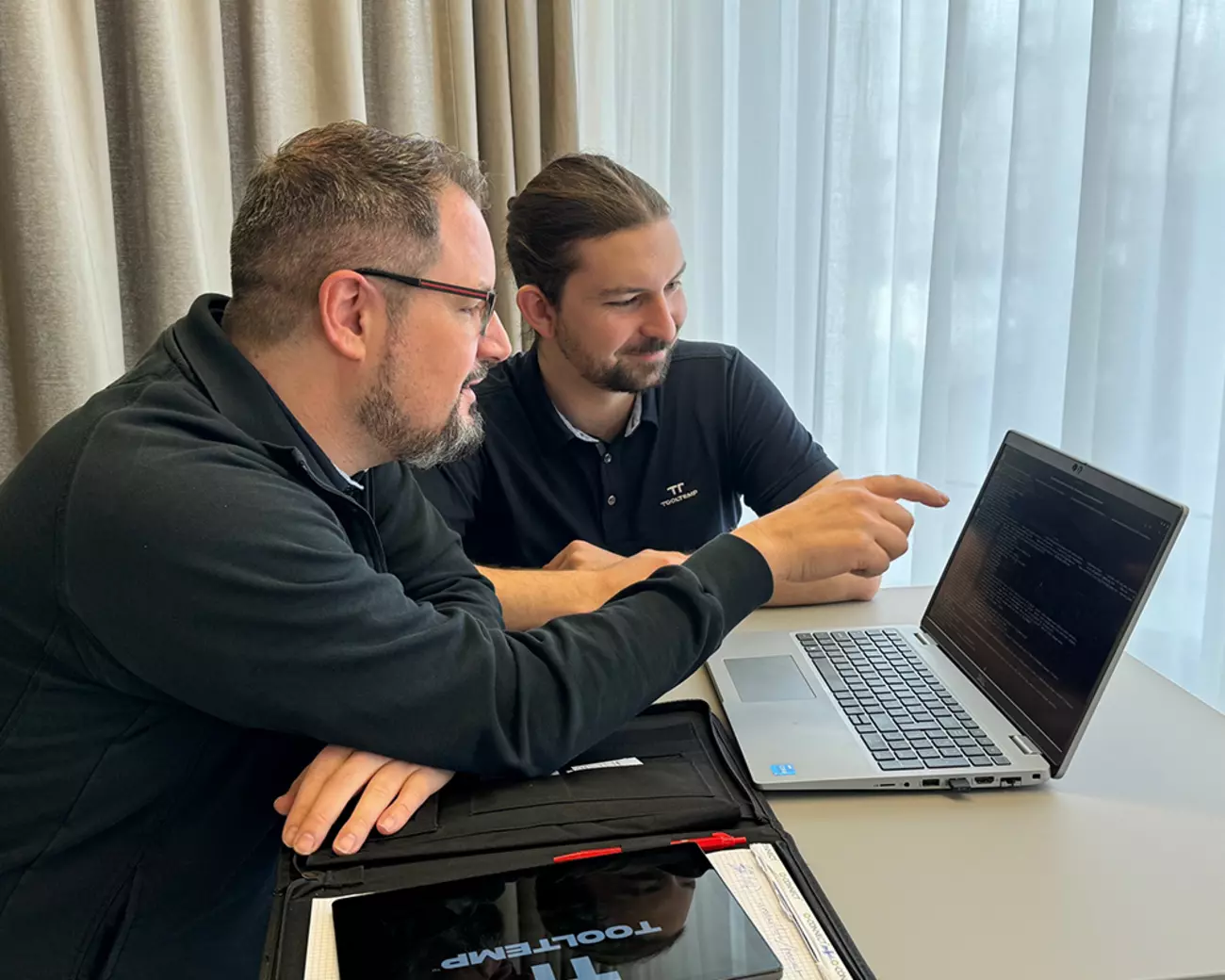 GianAndrea Müller and Roger Loriol brainstorming
GianAndrea Müller and Roger Loriol brainstorming
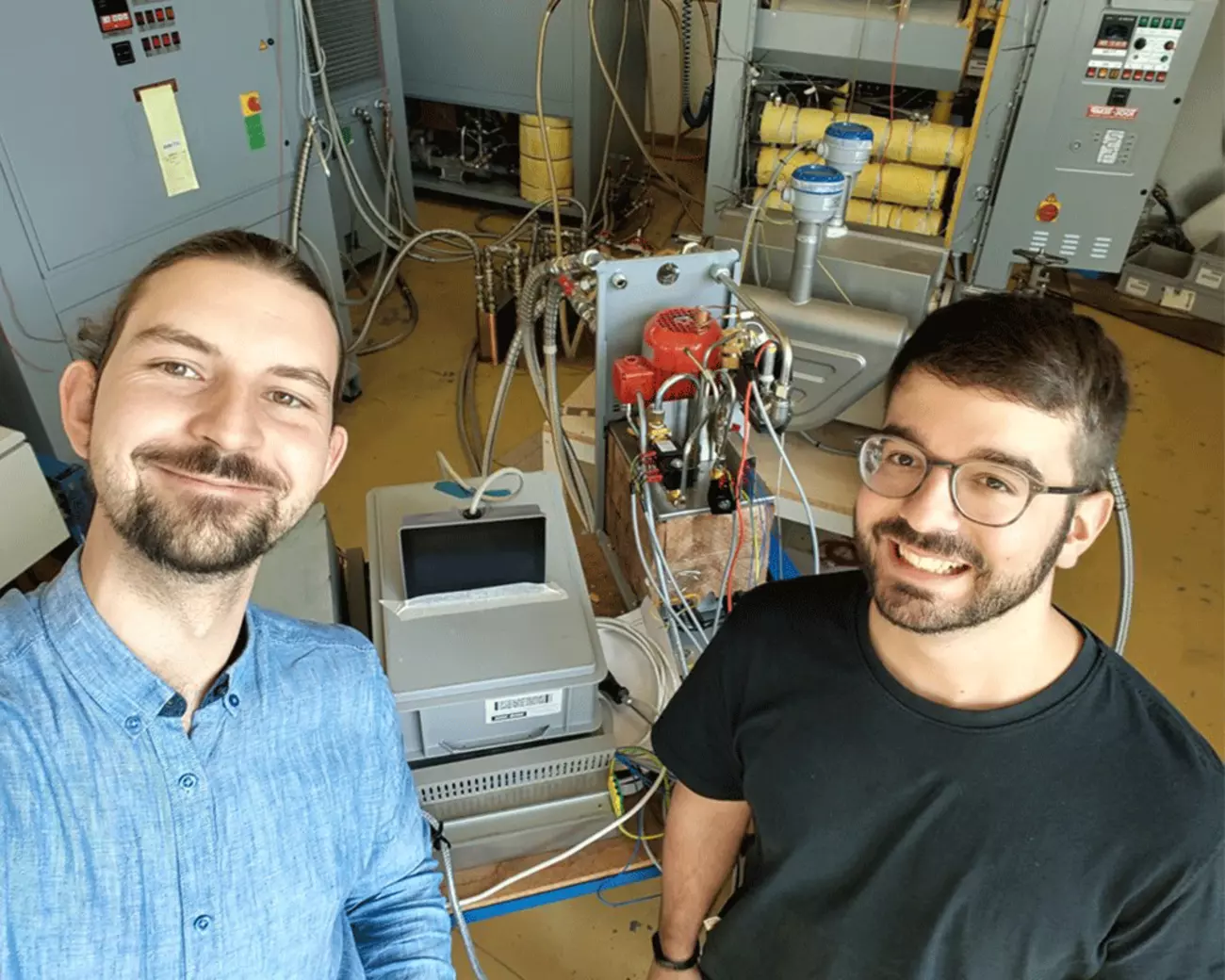 GianAndrea and Jonas Meier in front of the first test setup for MATIC
GianAndrea and Jonas Meier in front of the first test setup for MATIC